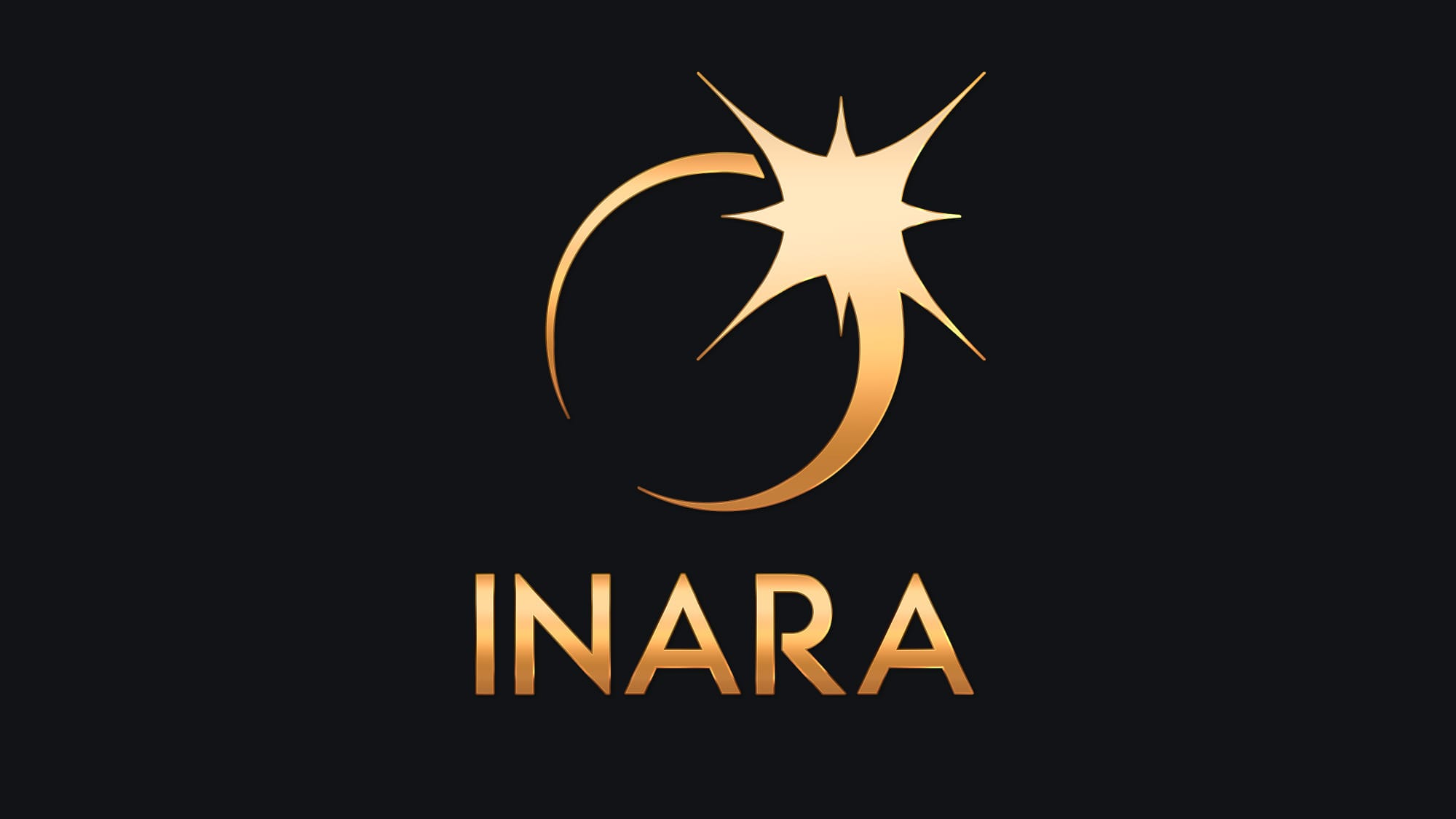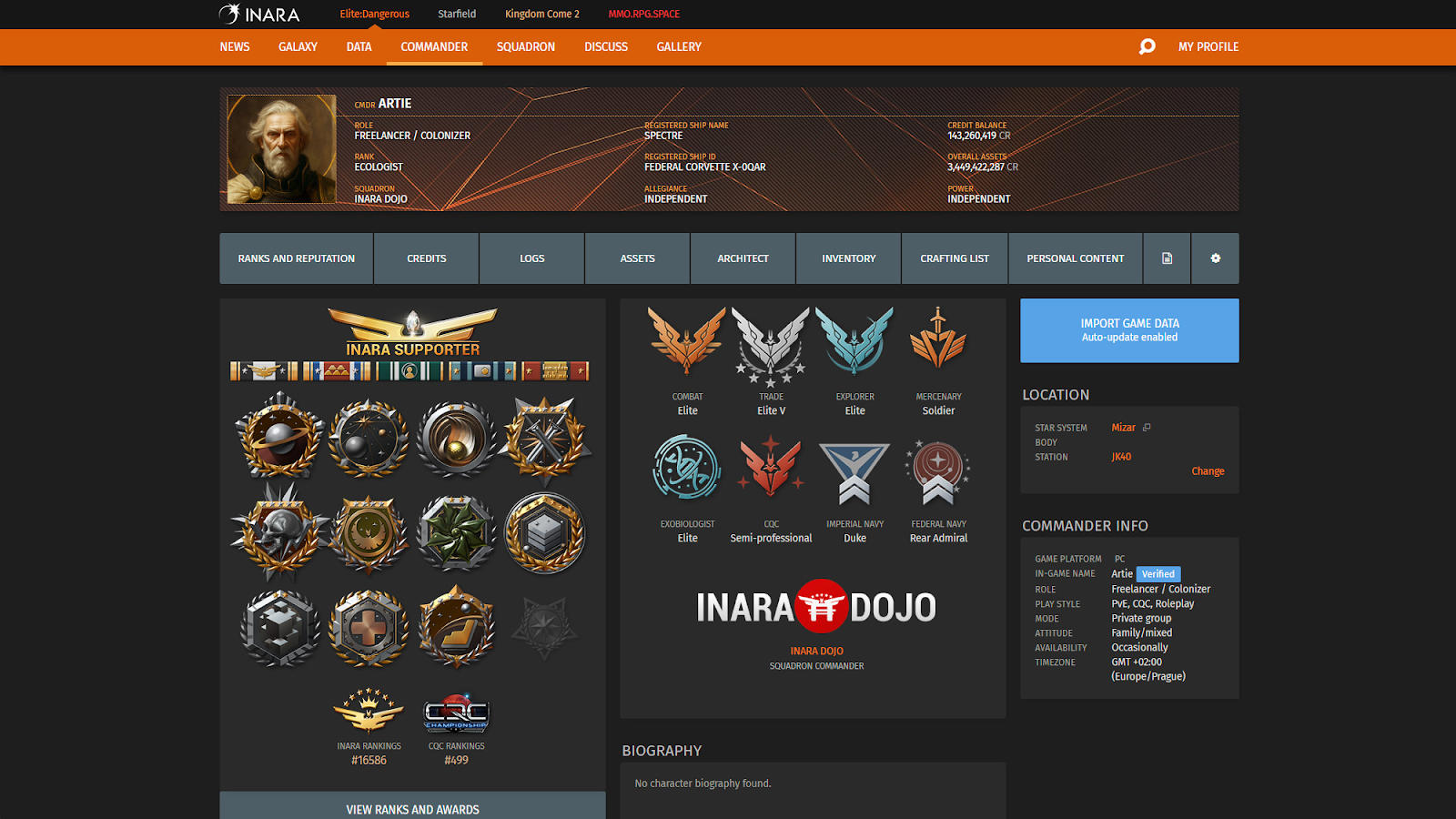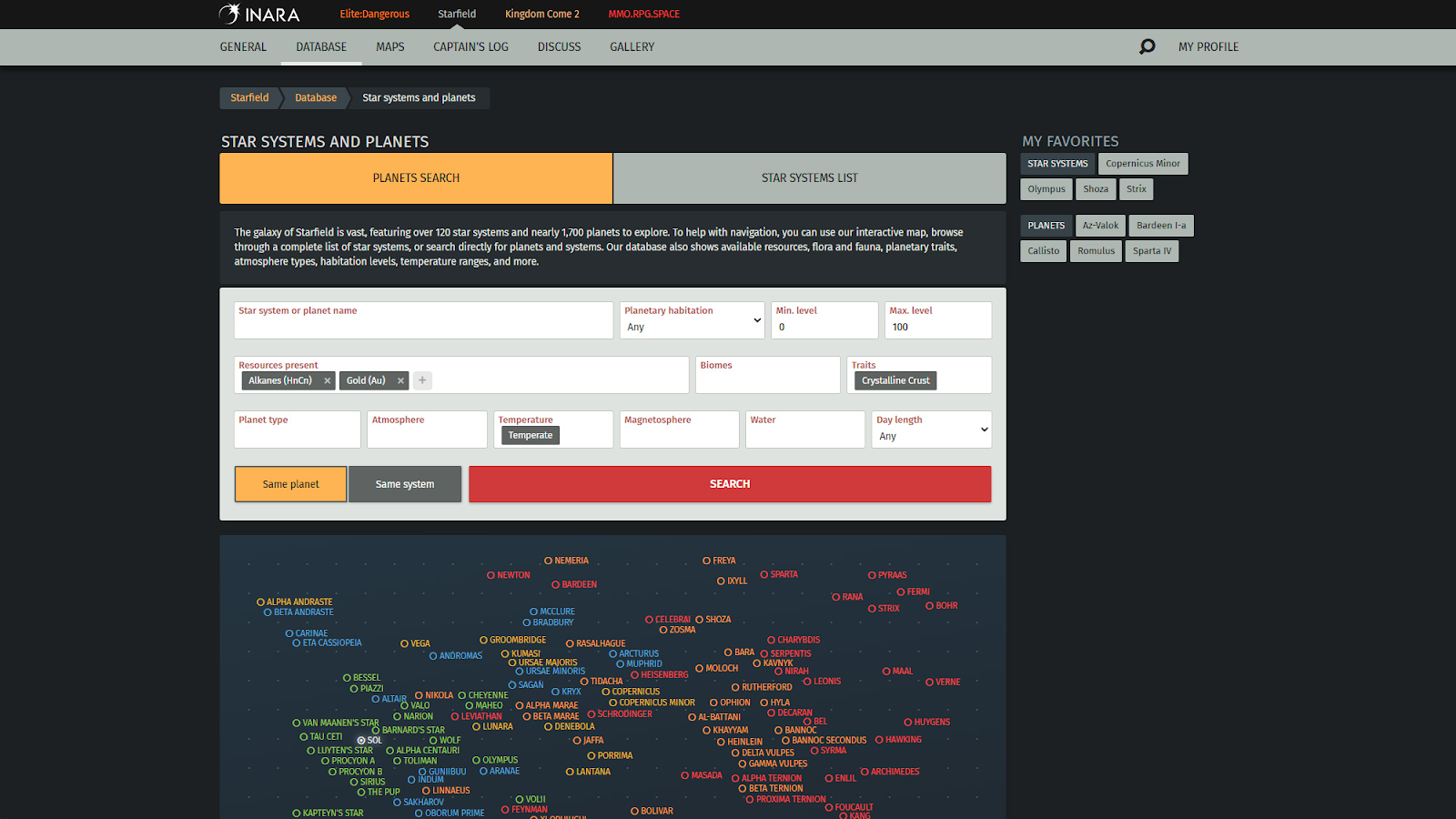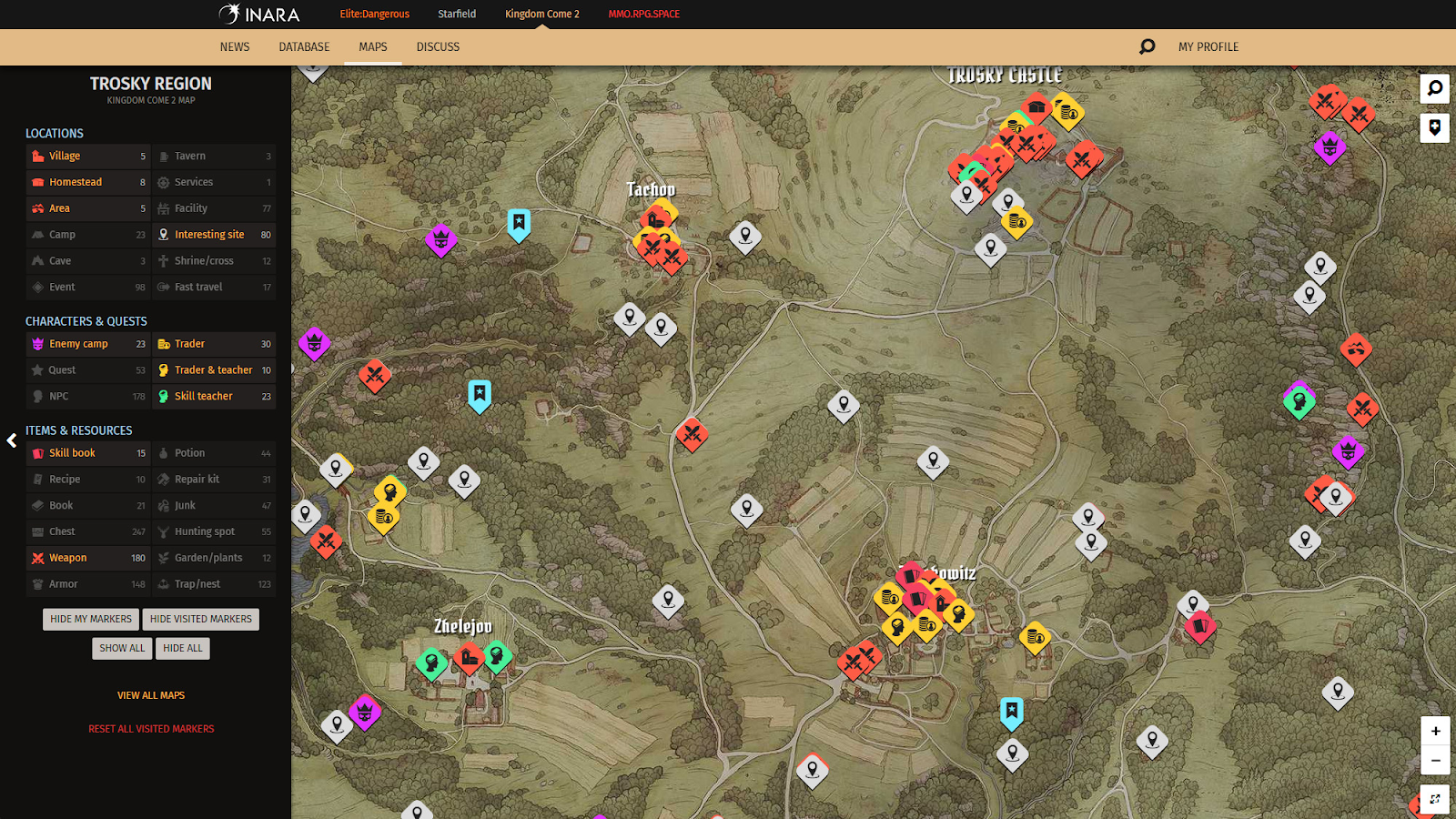
Welcome to the September edition of our Publisher Showcase series. Each month we highlight the passionate creators behind standout gaming websites in the Nitro network.
This month we’re spoke with Artie, the mind behind Inara, a long-running platform supporting games like Elite: Dangerous, Starfield, and more. What began as a personal fix for spreadsheet fatigue evolved into one of the most respected fan-made resources in the genre. A one-person project backed by years of hands-on game industry experience and fueled by a love for detail, Inara has become a trusted companion for explorers across galaxies.
Keep reading to learn how one developer turned a spreadsheet workaround into one of the most essential resources in the space sim genre 👇
First up, can you tell us a bit about your career/life background that led you to start Inara?
To be honest, I don’t like talking about myself too much — I prefer to let my work do the talking. I have been drawn to games since childhood, spending countless hours in arcades and on 8-bit computers. Later, I was fortunate enough to have the opportunity to work in the gaming industry. With some breaks, I spent most of my life there, either as an employee or a freelancer, and I also worked on various personal web projects alongside my job (none of which exist anymore, except Inara). All of that gave me useful experience and a solid foundation, especially in creative ways to make mistakes quickly.
One of the first games I ever played on the ZX Spectrum was Elite, so when I discovered a successor, Elite: Dangerous, was in development, it immediately caught my attention. That’s when the idea for Inara began to form.

What drove you to create Inara? Did you see a specific gap in the market? Was there a particular insight that motivated you to launch it?
When I started playing the beta of Elite: Dangerous, I quickly got tired of manually writing down market prices in a spreadsheet just to know where to buy or sell things. There were a few trading tools available at the time, but none of them was even close to what I wanted. Since I enjoy creating things and solving interesting problems, I started building my own tool — and that eventually became Inara.
I say “eventually” because at first it really wasn’t more than a trading tool for myself and a small group of players. It even had a different name: Elite Companion. Very shortly after I published it, Frontier Developments (creators of Elite) released their mobile app called… also Companion. An unfortunate coincidence. I had to look for a new name, and pretty quickly settled on Inara, inspired by a character from the cult TV series Firefly — who also happened to be a companion (sort of). It was a bit frustrating at the time, but I am glad it happened, because otherwise Inara might still be confused with an app that no longer exists.
How long have you been running your website, and how long did it take from development until it was live?
Inara has been running for more than ten years now. The beginnings were humble — it only provided market listings and trade routes, as I mentioned earlier. That first version was done in about two weeks, though it’s hard to remember exactly. Over time, Inara kept growing: more games were supported, more features were added, and existing features were improved or evolved as the games themselves changed. At this point, it’s safe to say there are thousands of hours poured into it, including an unreasonable amount of caffeine.
How did you decide on the specific features and tools available on Inara?
Mostly because I needed them myself, or they were popular and reasonable requests from users. I think it’s important to build something that not only users are happy with, but that you are also personally satisfied with. And you shouldn’t be afraid to say “no” when something doesn’t feel right for the site or the community. Sometimes a request sounds good, might be easy to implement, and could help 1% of users — but if it makes things worse for the other 99%, then it’s better to skip it.
How were you able to build a strong online presence for the website?
Most of Inara’s presence grew organically through word of mouth. Being active on forums and communities definitely helped, especially in the early days when people needed to know the site existed. A bit of SEO played a role, too, but I never focused too much on it. The biggest factor is pretty simple: people found the site useful and kept coming back when they needed it again.

What have been some of the most effective tactics to drive traffic to your website so far?
The most important thing is to make content for real people, not bots or search engines. Create something users actually find useful, and maybe they will tell their friends: “Dude! You need to use Inara!” and post links on forums, Discord, or social sites. Having decent SEO helps bring organic traffic as well, but I don’t like to compromise page content just to please search engines and improve page rank if it makes the experience worse for real users. That’s not how I want to do things.
What are you most proud of regarding the success of Inara so far? Any major highlights?
Well, there are many things, and it’s hard to pick just one. First of all, Inara as a whole — taking it from zero to a site that many players consider one of the best (if not the best) resources for Elite: Dangerous, Starfield, and Kingdom Come 2 is something I am really proud of.
I am also fond of some of the “smaller” technical achievements. For example, a tool that finds the best commodity trade routes with user-defined conditions like max. route distance across the entire Elite: Dangerous galaxy — and does it reasonably fast. Considering the millions of commodity records across hundreds of thousands of stations, a brute-force approach would take ages.
And of course, I can’t forget the community that has grown around Inara. So many creative players share their logbooks, post their images, or simply enjoy the games while using Inara to help them along the way. That’s something I truly appreciate.
What advice do you have for new and existing website owners that you wish you had known before you started?
Don’t underestimate UI/UX, as things can often be improved. Just because users are used to something on your site doesn’t mean it’s good — kind of like pineapple on pizza.
Also, don’t be afraid to ask your users for feedback directly. Many people won’t report small bugs or minor usability issues because they think they are insignificant — but those problems exist, and you may not even be aware of them.
On the technical side, try to do things the right way from the start. They don’t need to be perfect, and sometimes it’s inevitable to take shortcuts to get things done quickly. But always try to revisit and refactor such code as soon as possible, because leaving it too long usually costs more time later.

What do you like best about being a part of Nitro’s network of premium gaming/entertainment websites?
What I like most is the freedom in how you can monetize the website. Even without much time investment, you can set things up quickly. And if you have technical skills and are willing to put extra work in, you can tailor it even further to your needs. Combined with a relatively low impact on site performance, clear reporting, transparency, and a friendly, helpful team, it’s hard to find anything negative.
What’s next for Inara?
As I like to keep my options open, I won’t be specific, but I have plenty of ideas I would like to explore and possibly implement to keep pushing Inara forward. I am also keeping an eye on several upcoming games that I would like to support in the future. It’s never-ending work — but it’s fun! At least I don’t have to keep filling spreadsheets anymore.
A big thank you to Artie from Inara. Keep your eyes peeled for more insightful interviews like this in next month's edition of our Publisher Showcase, where we’ll continue to spotlight one of the 500+ stand out websites on Nitro, diving deep into their unique success!
Nitro is dedicated to reinventing website monetization for the gaming industry. Our ad tech platform combines uncompromised user experience, nitro-speed revenue and service with Net 7 Payouts, same-day support and the industry’s fastest ad loading.